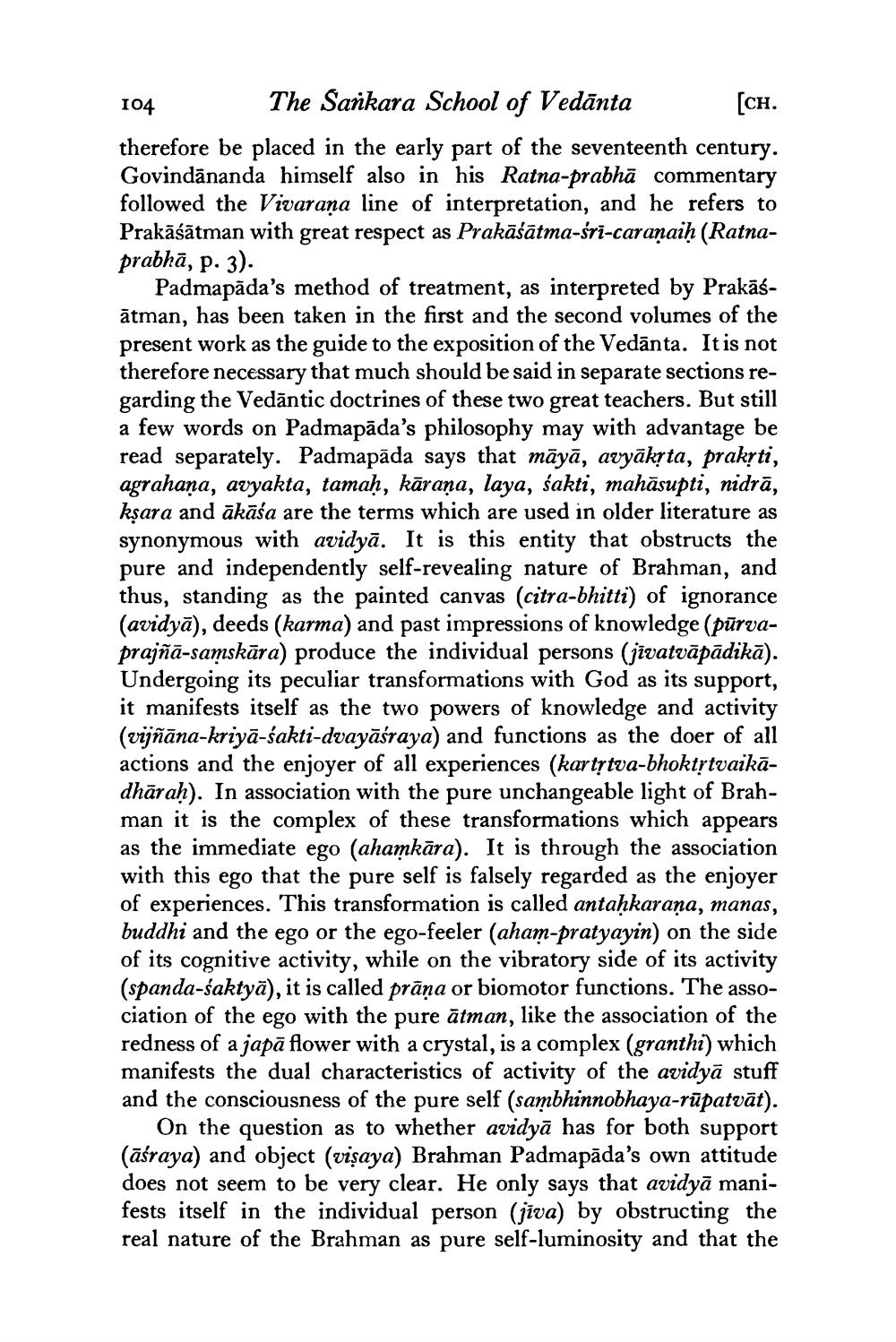________________
104
The Sankara School of Vedanta
[CH.
therefore be placed in the early part of the seventeenth century. Govindananda himself also in his Ratna-prabha commentary followed the Vivarana line of interpretation, and he refers to Prakāśātman with great respect as Prakāśātma-śrī-caranaiḥ (Ratnaprabhā, p. 3).
Padmapada's method of treatment, as interpreted by Prakāśatman, has been taken in the first and the second volumes of the present work as the guide to the exposition of the Vedanta. It is not therefore necessary that much should be said in separate sections regarding the Vedantic doctrines of these two great teachers. But still a few words on Padmapada's philosophy may with advantage be read separately. Padmapāda says that māyā, avyākṛta, prakṛti, agrahana, avyakta, tamaḥ, kāraṇa, laya, śakti, mahāsupti, nidrā, kṣara and ākāśa are the terms which are used in older literature as synonymous with avidya. It is this entity that obstructs the pure and independently self-revealing nature of Brahman, and thus, standing as the painted canvas (citra-bhitti) of ignorance (avidya), deeds (karma) and past impressions of knowledge (pūrvaprajñā-samskāra) produce the individual persons (jīvatvāpādikā). Undergoing its peculiar transformations with God as its support, it manifests itself as the two powers of knowledge and activity (vijñāna-kriyā-śakti-dvayāśraya) and functions as the doer of all actions and the enjoyer of all experiences (kartṛtva-bhoktṛtvaikādhāraḥ). In association with the pure unchangeable light of Brahman it is the complex of these transformations which appears as the immediate ego (ahamkāra). It is through the association with this ego that the pure self is falsely regarded as the enjoyer of experiences. This transformation is called antaḥkaraṇa, manas, buddhi and the ego or the ego-feeler (aham-pratyayin) on the side of its cognitive activity, while on the vibratory side of its activity (spanda-saktyā), it is called prāna or biomotor functions. The association of the ego with the pure ātman, like the association of the redness of a japā flower with a crystal, is a complex (granthi) which manifests the dual characteristics of activity of the avidyā stuff and the consciousness of the pure self (sambhinnobhaya-rupatvāt).
On the question as to whether avidya has for both support (āśraya) and object (visaya) Brahman Padmapada's own attitude does not seem to be very clear. He only says that avidya manifests itself in the individual person (jiva) by obstructing the real nature of the Brahman as pure self-luminosity and that the




